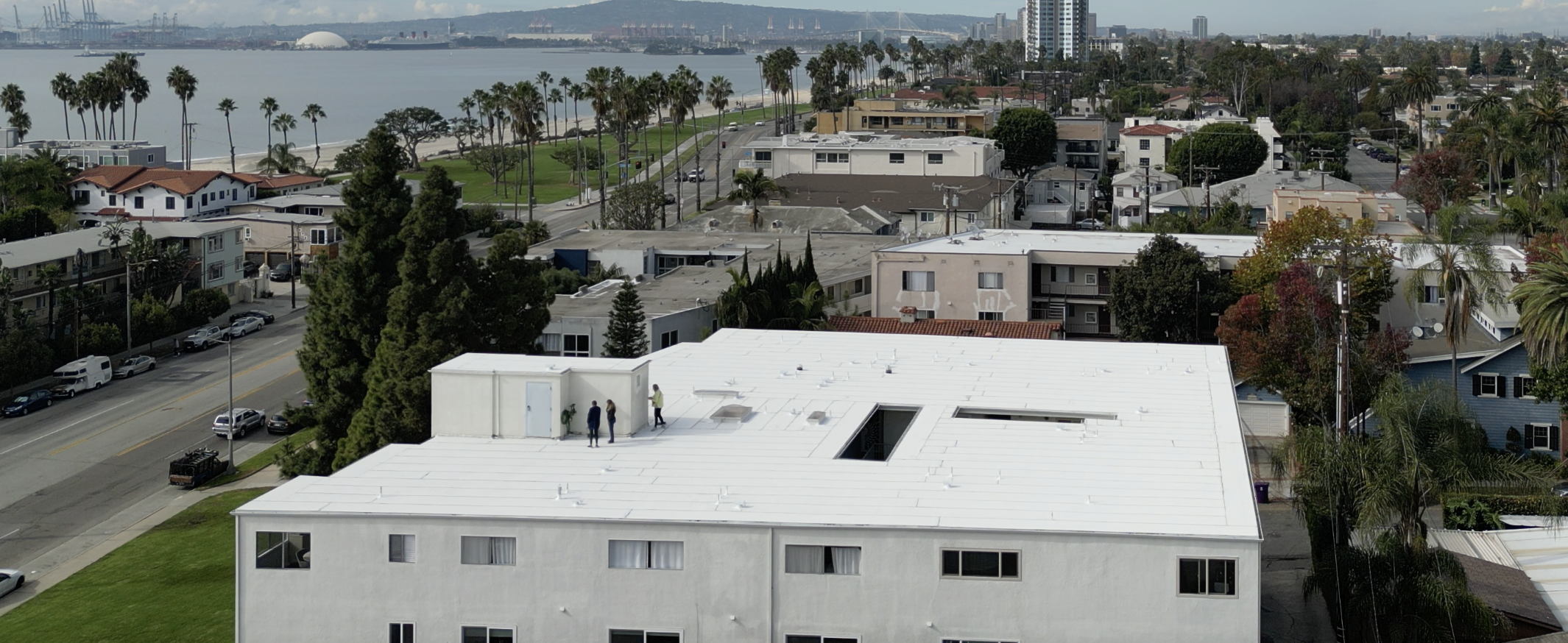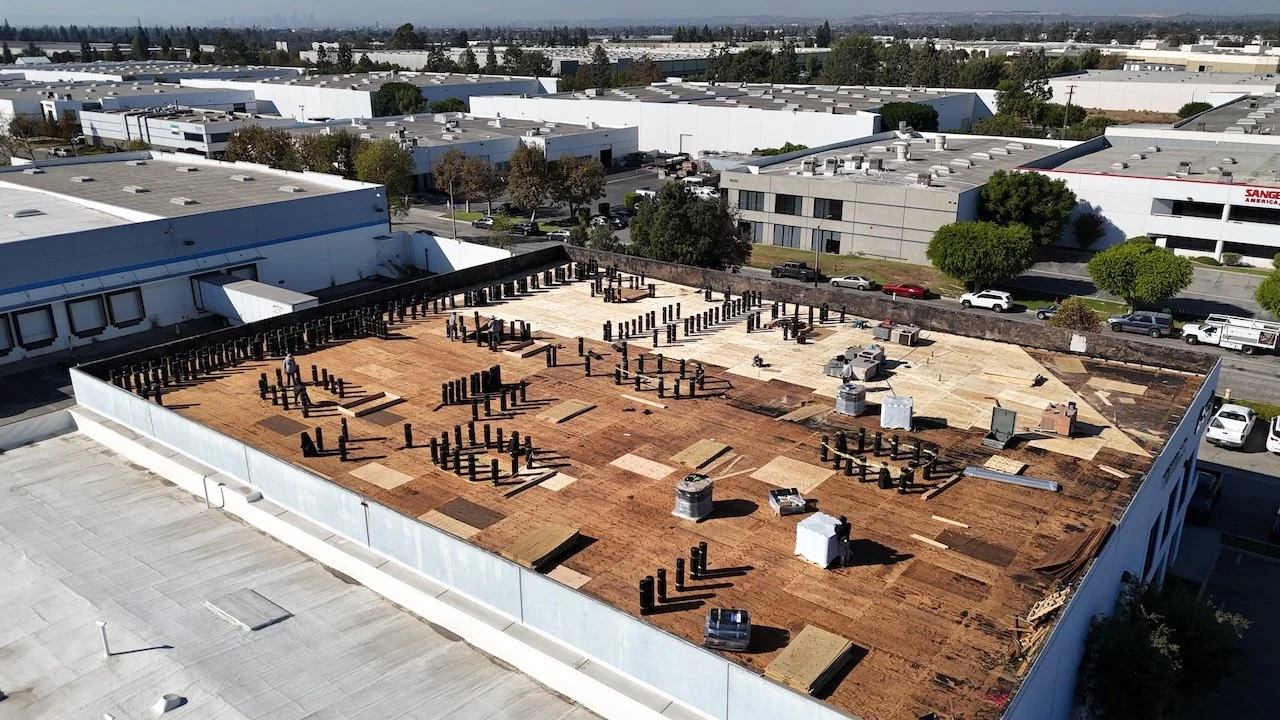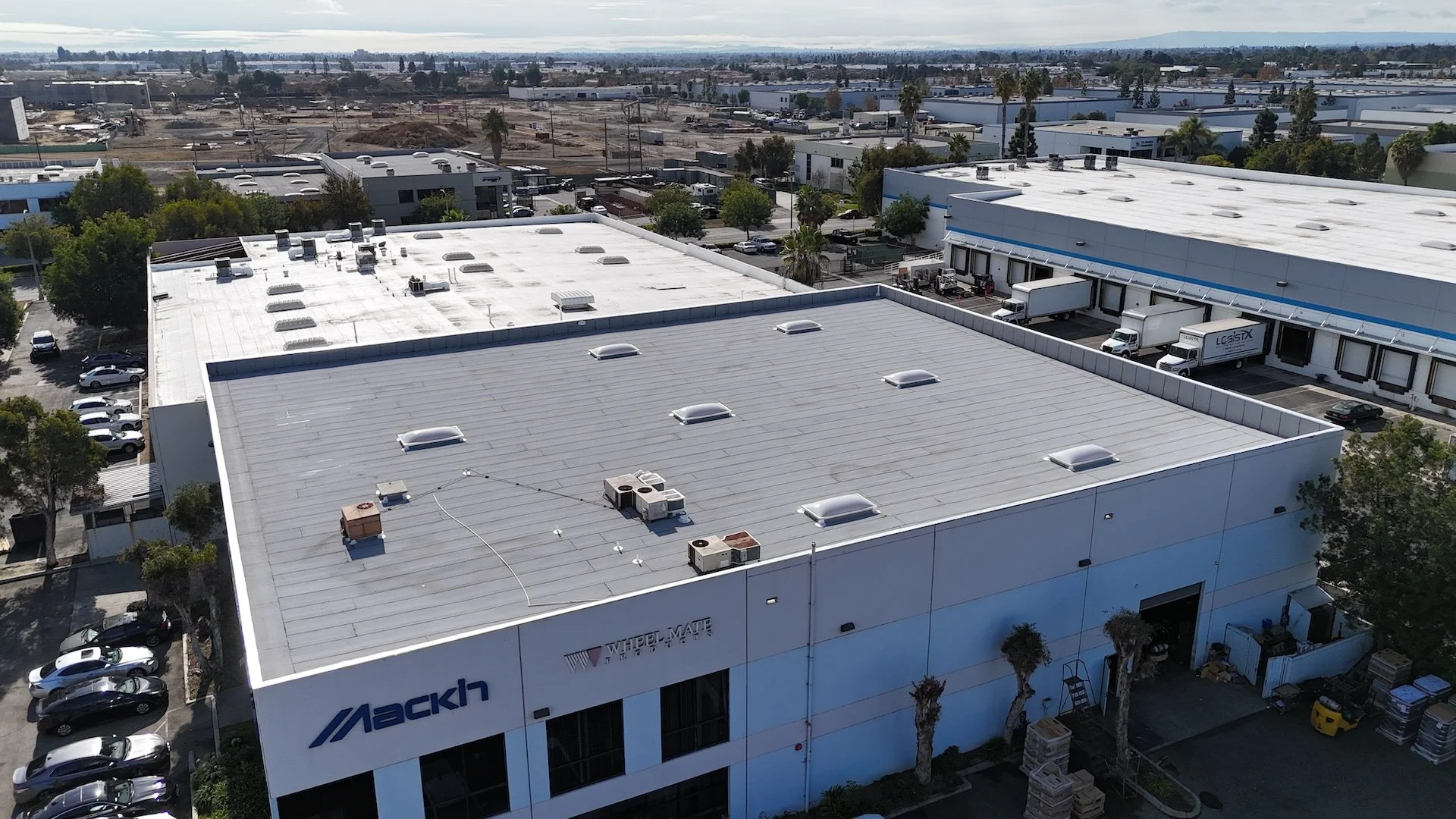
Durable & Sustainable Commercial Roofing Systems
Protect your commercial property with the utmost longevity, durability, and energy-efficiency
Commercial Roofing Products Offered:
2-ply and 3-ply Torch-down Roofing
TPO/PVC
WeatherWeld
Gutter Systems
Skylights
Composition (Asphalt) Shingles
Concrete Tile
Metal Roofing
Scuppers & Drainage
Silicone Coatings
Longevity
The choice of roofing material, whether it’s built-up roofing, metal, single-ply membrane, or other options, must be carefully considered to ensure longevity and durability. These roofs are designed to withstand the unique challenges posed by large commercial structures, such as shopping centers, office buildings, and warehouses.
Durability
A sturdy and reliable commercial roof is a testament to a company's commitment to the safety and well-being of its occupants and a foundational element in preserving the integrity of the business itself. In the world of commerce, roofing goes beyond merely providing shelter; it represents a strategic investment in the longevity and functionality of a business.
Energy Efficiency
In addition to weathering the elements, commercial roofs are often equipped with added features such as insulation and reflective coatings to improve energy efficiency and reduce long-term operational costs. This provides thermal comfort and aligns with sustainability goals by lessening the environmental impact of the building..
Check out some of GreenCal Construction’s past commercial roof installations…
Commercial flat roof and skylight installation in Santa Fe Springs, CA
Commercial flat roof installation in Long Beach, CA


